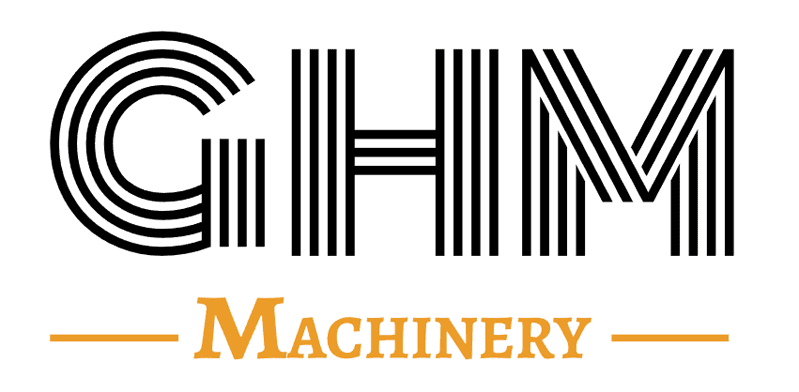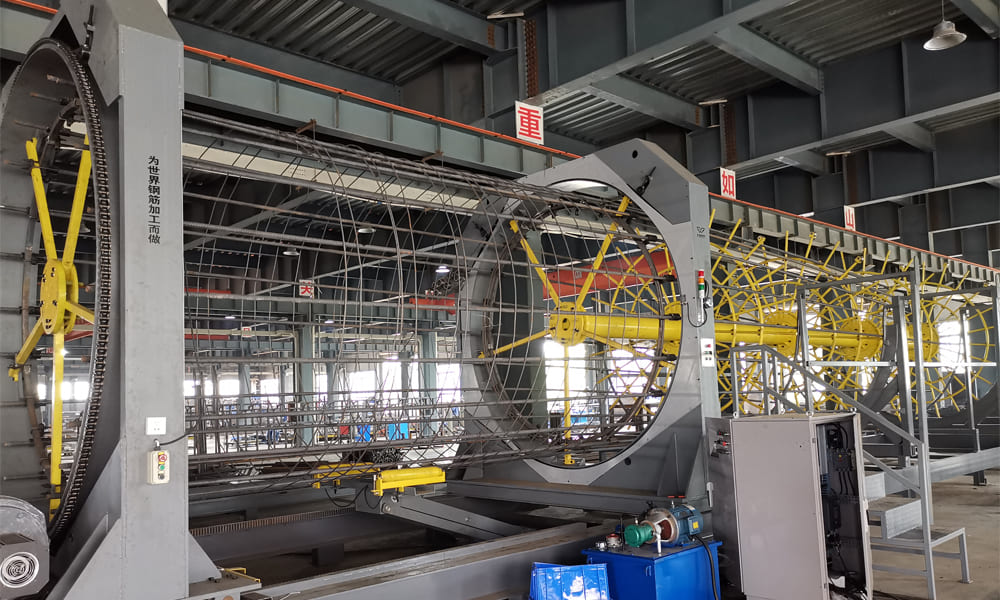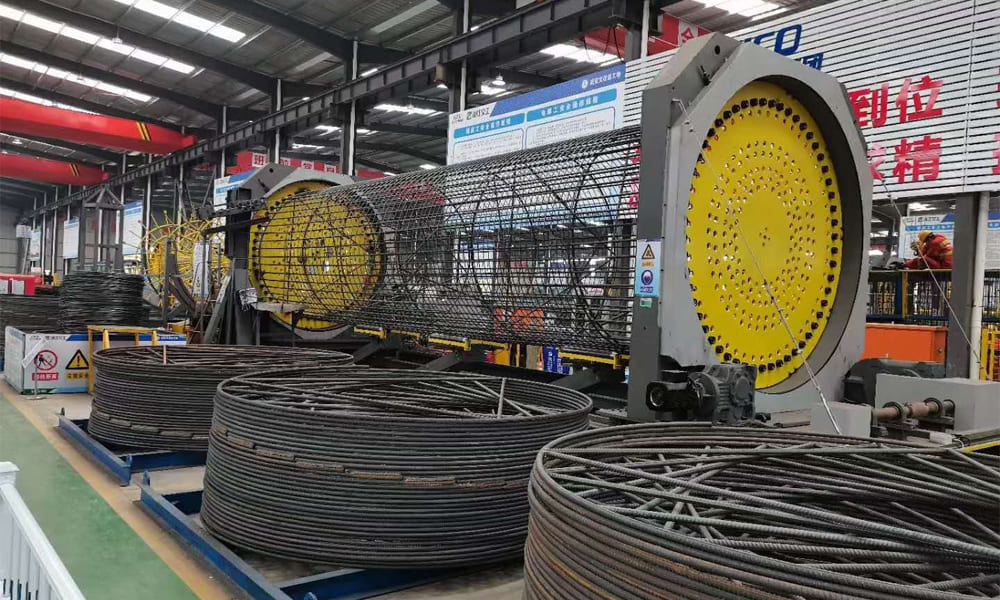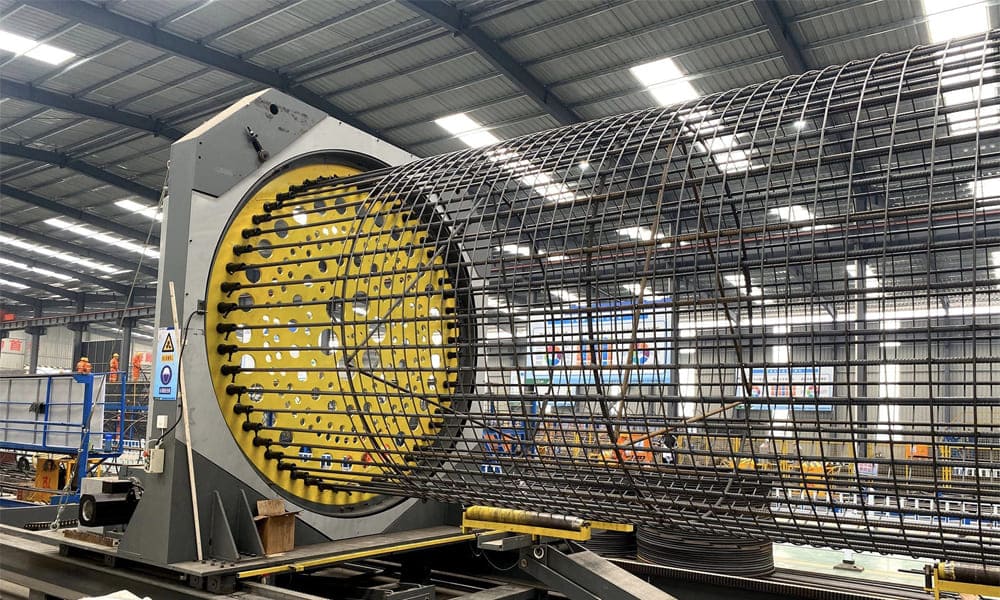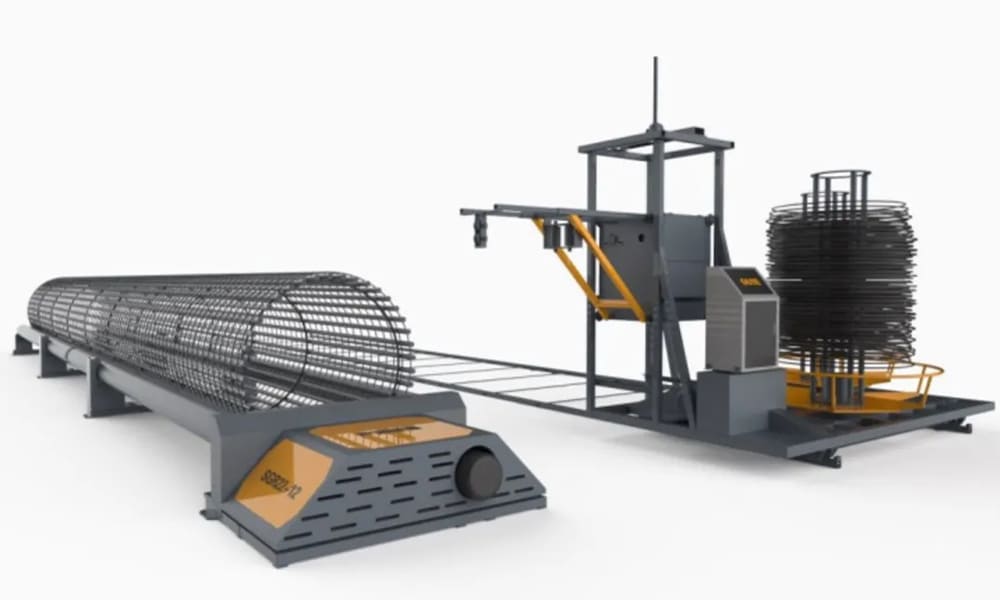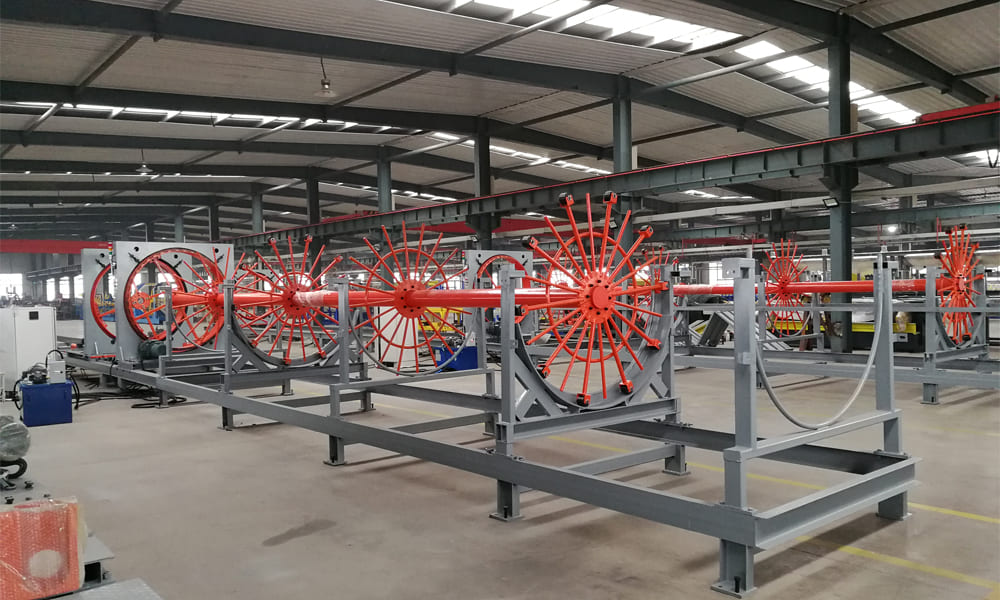Efficient and safe operation of a steel cage welding machine involves several key steps. This guide outlines the process, from preparation to maintenance, ensuring the production of high-quality reinforcement cages for concrete construction projects.
1. Preparation
- Material Preparation:
Gather the necessary steel bars and spirals. Ensure they are cut to the specified lengths and shapes as required by your project specifications. - Machine Setup:
Configure the machine according to the cage dimensions, including length, diameter, and spacing. This setup includes adjusting the welding head, feeding mechanisms, and control systems to match the required parameters.
2. Loading
- Load Longitudinal Bars:
Place the longitudinal bars (rebar) securely into the machine’s holders. These bars form the main structure of the reinforcement cage. - Load Spiral Wire:
Insert the coil of spiral wire into the feeding mechanism. This wire will wrap around the longitudinal bars, providing stability and strength to the cage.
3. Welding and Assembly
- Initial Positioning:
Adjust the initial positioning of the longitudinal bars and spiral wire to prepare for the welding process. - Start Welding:
Activate the machine to begin welding. The machine will automatically feed the spiral wire around the longitudinal bars while welding them together at specified intervals. - Rotation and Welding:
As the machine rotates the cage, the welding head moves along its length, ensuring that the spiral wire is securely attached to the longitudinal bars. - Automatic Feeding:
The machine continuously feeds the spiral wire, ensuring consistent spacing and secure welding throughout the process.
4. Monitoring and Adjustment
- Monitor the Process:
Keep an eye on the machine’s operation to ensure that everything is functioning correctly. Make adjustments to parameters as needed to maintain the desired quality. - Quality Check:
Regularly inspect the weld quality and spacing to confirm they meet the project specifications. - Adjust Tension:
If necessary, adjust the tension of the spiral wire to ensure tight and uniform winding around the longitudinal bars.
5. Completion and Unloading
- Complete the Cage:
Continue the welding process until the entire length of the cage is finished. - Stop the Machine:
Once the cage is complete, stop the machine and cut the spiral wire to finalize the product. - Unload the Cage:
Carefully remove the finished reinforcement cage from the machine, handling it gently to avoid any deformation or damage.
6. Final Quality Inspection
- Inspect the Cage:
Conduct a thorough inspection of the finished cage for any defects or inconsistencies in the welds and spacing. - Correct Defects:
If any defects are found, correct them manually or by re-welding as necessary to ensure the cage meets quality standards.
7. Cleanup and Maintenance
- Clean the Machine:
After operation, clean the machine to remove any debris or residue from the welding process to maintain its performance. - Maintenance:
Perform routine maintenance checks and address any wear and tear on the machine components to ensure longevity and reliability for future use.
Safety Consideration
- Always wear appropriate personal protective equipment (PPE), including welding masks, gloves, and protective clothing.
- Ensure the machine is properly grounded to prevent electrical hazards.
- Follow all safety protocols and manufacturer guidelines to prevent accidents and injuries during operation.
By adhering to these steps and safety precautions, you can efficiently and safely operate a steel cage welding machine, producing high-quality reinforcement cages essential for concrete construction projects.
